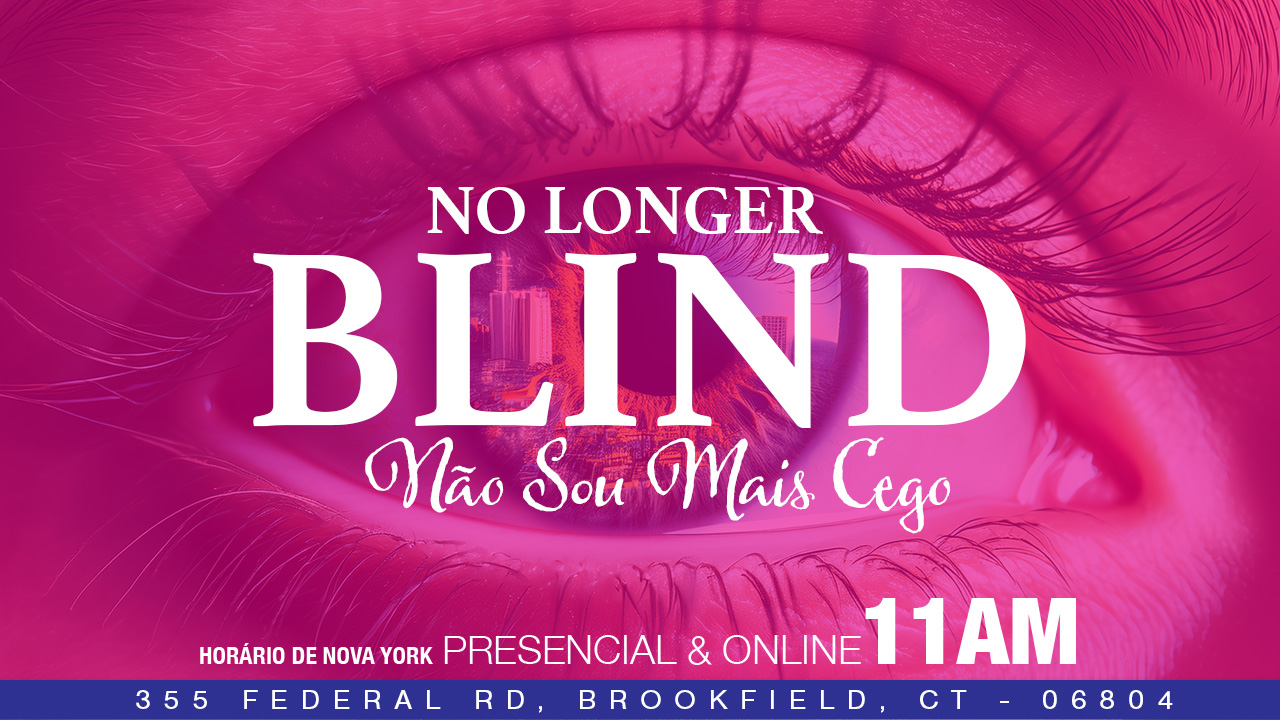
BCBN Livestream | Ao Vivo // No Longer Blind – Part 2 | Não Sou Mais Cego – Parte 2
Parte 2 – Tocou Duas Vezes / Part 2 – Touched Twice Jesus cura um cego em duas etapas — Marcos 8:22–26. Primeiro ele vê de forma distorcida: “Vejo pessoas, mas parecem árvores andando.” (v.24) Depois, sua visão é restaurada por completo. Jesus nos ensina que nem sempre a cura é instantânea — às vezes, Ele quer que aprendamos a confiar enquanto tudo ainda está embaçado. Está aceitando enxergar só pela metade? Peça um segundo toque. Jesus heals a blind man in two stages — Mark 8:22–26. At first, he says: “I see people; they look like trees walking around.” (v.24) Then, his sight is fully restored. Jesus shows us that healing isn’t always instant. Sometimes He teaches us to trust while things are still blurry. Are you settling for half-vision? Ask for a second touch.
-
No Longer Blind – Part 1 | Não Sou Mais Cego – Parte 1
Parte 1 – Você Crê Nisso? / Part 1 – Do You Believe This? Dois homens cegos seguem Jesus e clamam por misericórdia — Mateus 9:27–31. Quando finalmente chegam até Ele, Jesus faz uma pergunta que ainda ecoa hoje: “Vocês creem que posso fazer isso?” (v.28) A cura vem com fé — e com disposição de ir até o fim. Não pare no clamor. Siga Jesus até dentro da casa e diga: “Sim, Senhor!” Two blind men follow Jesus and cry out for mercy — Matthew 9:27–31. When they reach Him, Jesus asks a question that still echoes today: “Do you believe that I am able to do this?” (v.28) Healing begins with faith — and with the courage to come all the way in. Don’t stop at the cry. Follow Jesus into the house and say: “Yes, Lord!”
-
Living For What Lasts – Part 2 | Vivendo Pelo Que é Eterno – Parte 2
Parte 2: Quando for tarde demais | Part 2: When It’s Too Late Jesus narra a história de dois homens: um rico, que vivia no luxo, e Lázaro, um mendigo coberto de feridas à porta do rico — Lucas 16:19–31. Após a morte, os destinos se invertem: Lázaro é acolhido ao lado de Abraão, e o rico sofre em tormento. O ensinamento é claro e direto: há consequências eternas nas nossas escolhas presentes, especialmente na forma como tratamos os outros e respondemos à Palavra de Deus. O tempo de ouvir e mudar é agora. “Eles têm Moisés e os Profetas; que os ouçam.” (Lucas 16:29, NVI) Jesus tells the story of two men: a rich man who lived in luxury and Lazarus, a poor beggar covered in sores at his gate — Luke 16:19–31. After death, their fortunes are reversed. Lazarus is comforted, and the rich man is in agony. The message is sobering: our eternal future is shaped by how we live and love now, and by how we respond to the voice of Scripture. There will come a day when it’s too late to change. “They have Moses and the Prophets; let them listen to them.” (Luke 16:29,
-
Living For What Lasts – Part 1 | Vivendo Pelo Que é Eterno – Parte 1
Part 1: Use It Before You Lose It | Parte 1: Use Antes que Perca Jesus conta a parábola de um administrador que estava prestes a ser demitido e, numa tentativa de garantir seu futuro, reduz as dívidas dos devedores de seu senhor — Lucas 16:1–13. Jesus não elogia a desonestidade, mas a astúcia do homem em pensar no amanhã. A lição é clara: devemos usar com sabedoria os recursos que Deus nos confiou, investindo não apenas no presente, mas na eternidade. “Usem a riqueza deste mundo ímpio para ganhar amigos, de forma que, quando ela acabar, estes os recebam nas moradas eternas.” (Lucas 16:9, NVI) Jesus tells the parable of a manager who, about to lose his position, quickly reduces others’ debts to secure future favors — Luke 16:1–13. Jesus doesn’t praise the man’s dishonesty, but his foresight. The teaching challenges us to use what we have today—money, influence, opportunities—with eternity in mind, as stewards, not owners. “Use worldly wealth to gain friends for yourselves, so that when it is gone, you will be welcomed into eternal dwellings.” (Luke 16:9, NIV)








